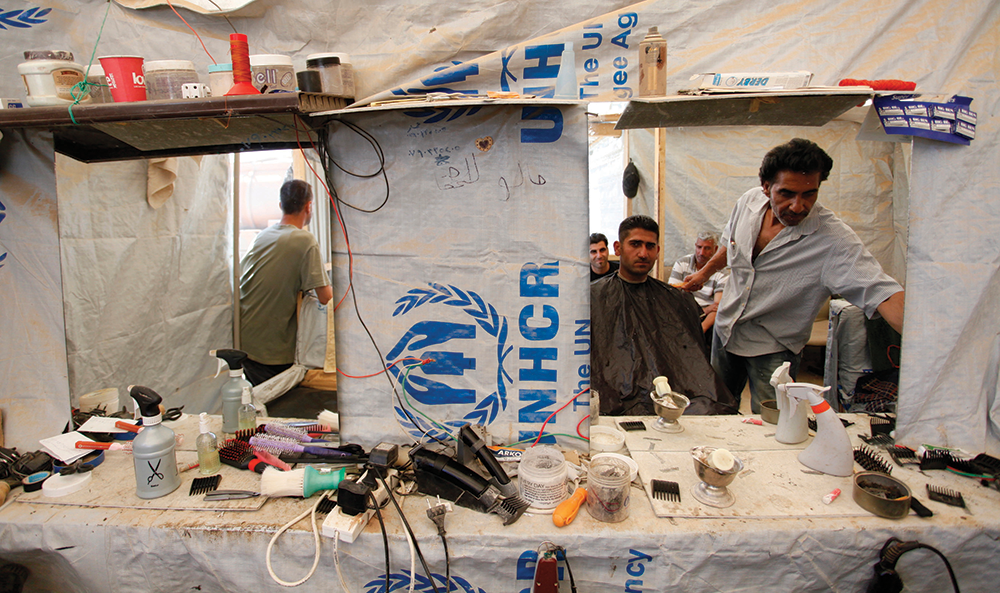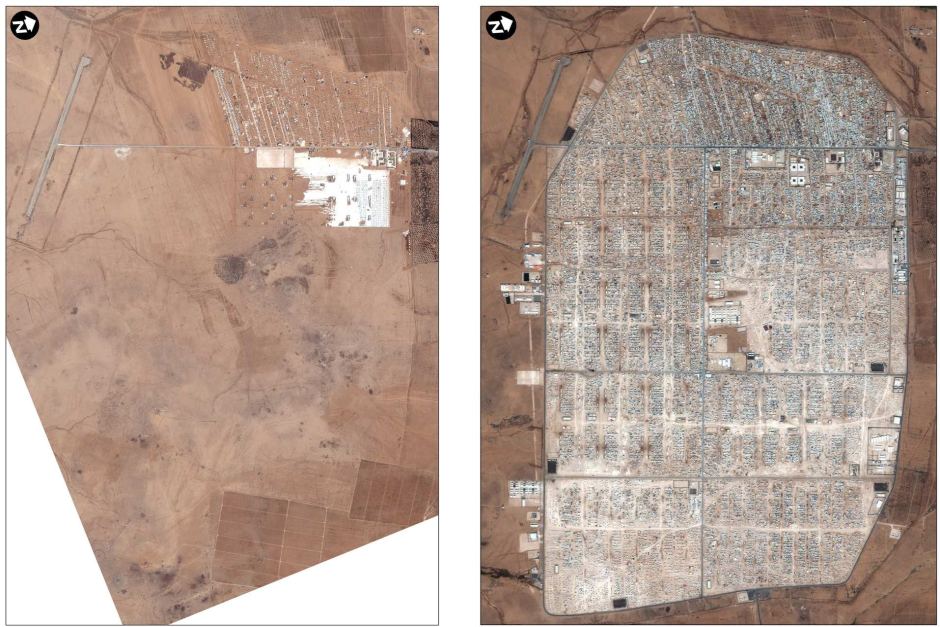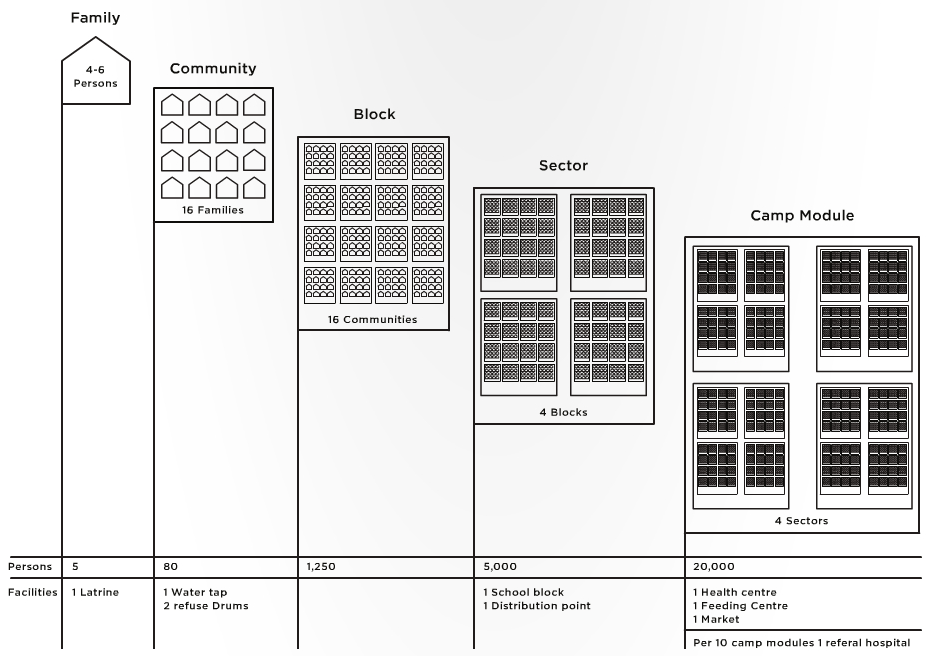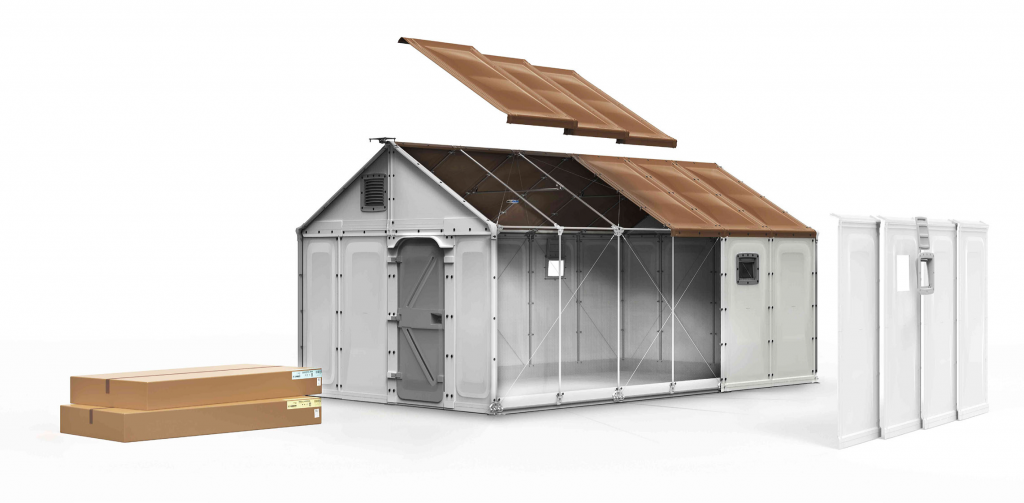Refugee camps as the new city
|
WHAT There is an architectural language in current refugee camps to be explored, the unique coexistence of temporarily and permanence, this thesis intends to explore that language and the urban layout of the camps. WHY As UNHCR reports, there are 65.3 million people displaced by conflict in 2015, a population higher than that of Canada, Australia and New Zealand put together. The refugee population worldwide has hit a record high point for the last 3 decades. There are three primary reasons for this increase; continuous conflict in countries such as Somalia and Afghanistan that have lasted three decades; new conflicts in countries such as Syria, South Sudan, Yemen; and the rate of solutions falling since the cold war leaving most refugees in limbo state. The first two we can’t change through architecture, however we can find solutions to house these refugees in a better state. HOW Through analysis of two camps, Zaatari and Azraq, one relatively successful camp and another planned and constructed for 10 months based on lessons learnt from Zaatari. I would like to research into their history, phasing, road networks, program distribution, these information would be primarily obtained through UNHCR and other nonprofit organizations and interviews conducted by news agencies. Using this analysis as foundation, I intend to design a model for new refugee camps within Europe (site to be determined through analysis). Zaatari with its population of 79901 (oct 2016) has already become Jordan’s fourth most populated city. The camp follows a layout set by UNHCR, and includes 9 schools, 27 community centers, 2 hospitals and 9 health centers. The urban layout of the camp is shown below, mostly following a grid system with an exception of the cluster on the left, which was the first settlement. zaatari-infrastructure-map-2016 Like all cities, Zaatari has its very own market street, nicknamed Champs Elysee with stores selling products from cigarettes, candy floss to gas tanks and electrical supplies. These businesses don’t stay within the perimeters of the camp, some also commerce with Jordanians in the nearby Zaatari village. “We have two weddings a day and there are people who come from outside the camp to rent dresses because it is cheaper here.” says Atef, a wedding dress hire shopowner in Zaatari.  Abd al-Raouf Abo Majd, 45, right, known as ‘the Zaatari barber’, cuts a Syrian refugee’s hair in his UNHCR tent barbershop, at Zaatari refugee camp on 25th April 2013. Photo: Mohammad Hannon/AP/Press It is evident that Zaatari is here to stay, therefore we need to start looking at camps in a more urbanist way. The below diagram shows the UNHCR guideline for camp organisation, it is designed to allow for easy supervision and set up. However the uniformity of the tents doesn’t allow for different family sizes, and social political differences. The urban layout of the camp should address the following issues:- Close proximity of all units to public facilities
Ensure safety of the people through neighbourhood surveillance Easy natvigation through non-uniformity Provide architecture of healing both emotionally and physically The living unit is an essential part of a refugee camp, below is the RHU developed by IKEA Foundation, comprising of connectors, pipes, lightweight panels, solar panels and shader for better insulation.This well designed modular system could be adopted in my proposal of the distribution point which is the most crucial program in the camp, a civic structure that is also emblematic of power and desperation. To conclude, I intend to design a refugee camp model through the following means, first analyse refugee flow trend to determine my site within Europe, second analyse current refugee camps and other urban layouts to determine the most suitable, thirdly analyse everyday life of the refugees and the surrounding context of the site determine and design one or few public facilities to create better living conditions for the refugees and their hosts. Bibliography Herz, M., 2008. Refugee Camps or Ideal Cities in Dust and Dirt. In: I. Ruby & A. Ruby, eds. Urban Transformation. Berlin: Ruby Press, pp. 276-289. UNHCR, Handbook for Emergencies Gehl, J., 2010. Cities for People. Washington: Island Press. |


